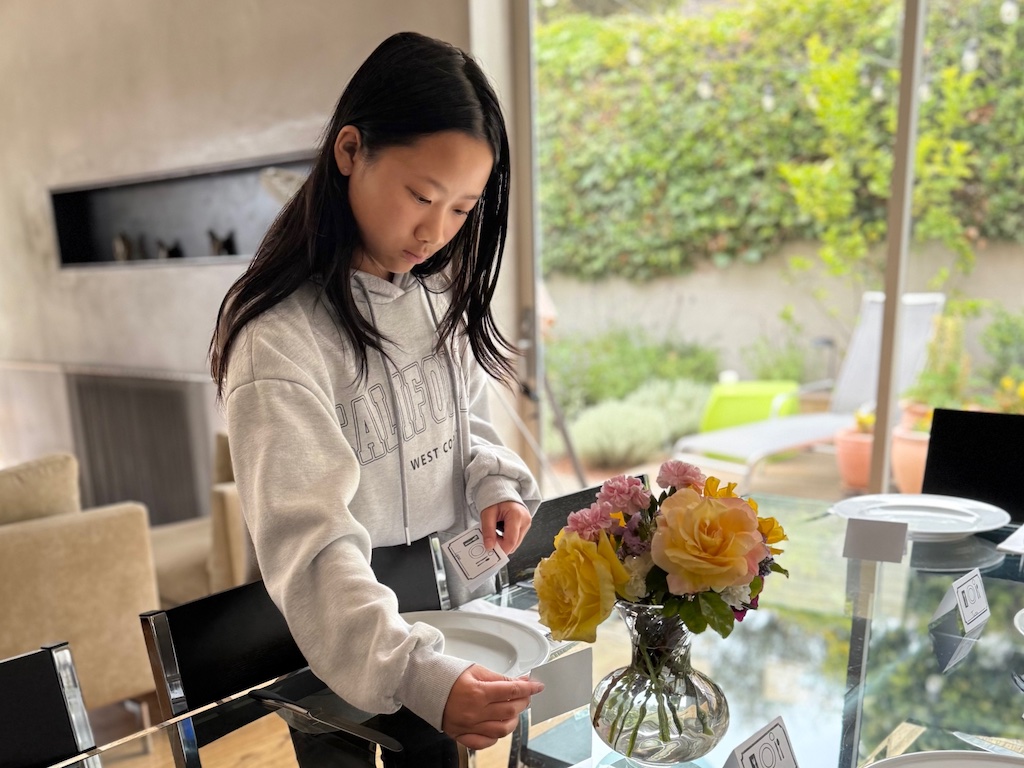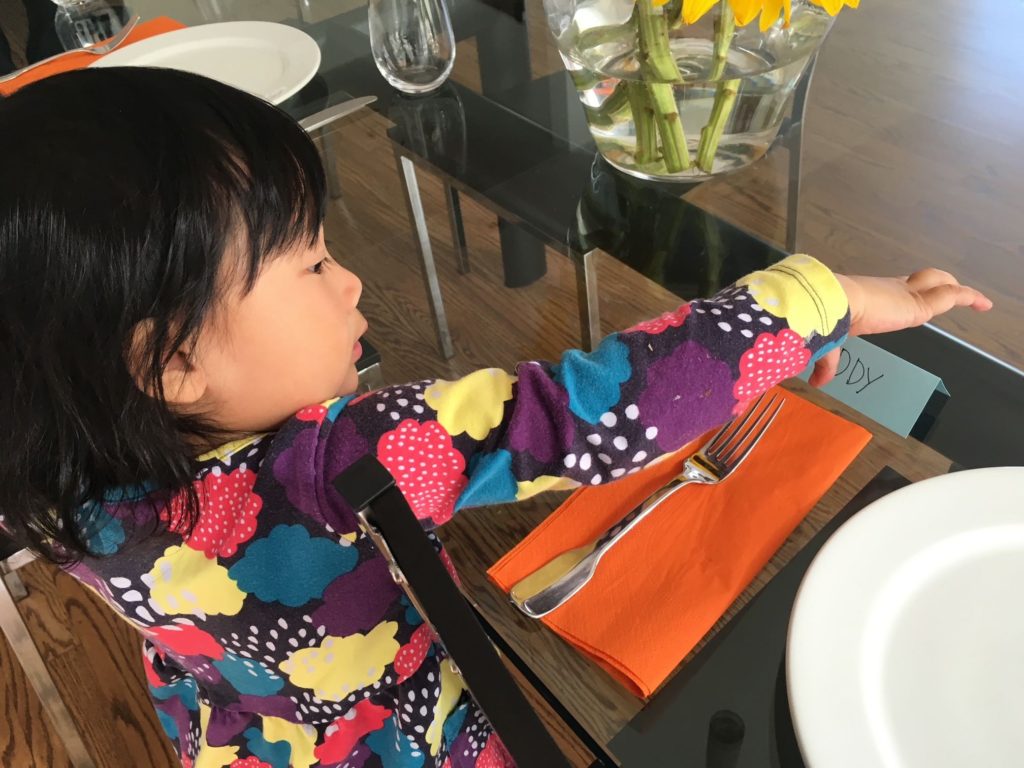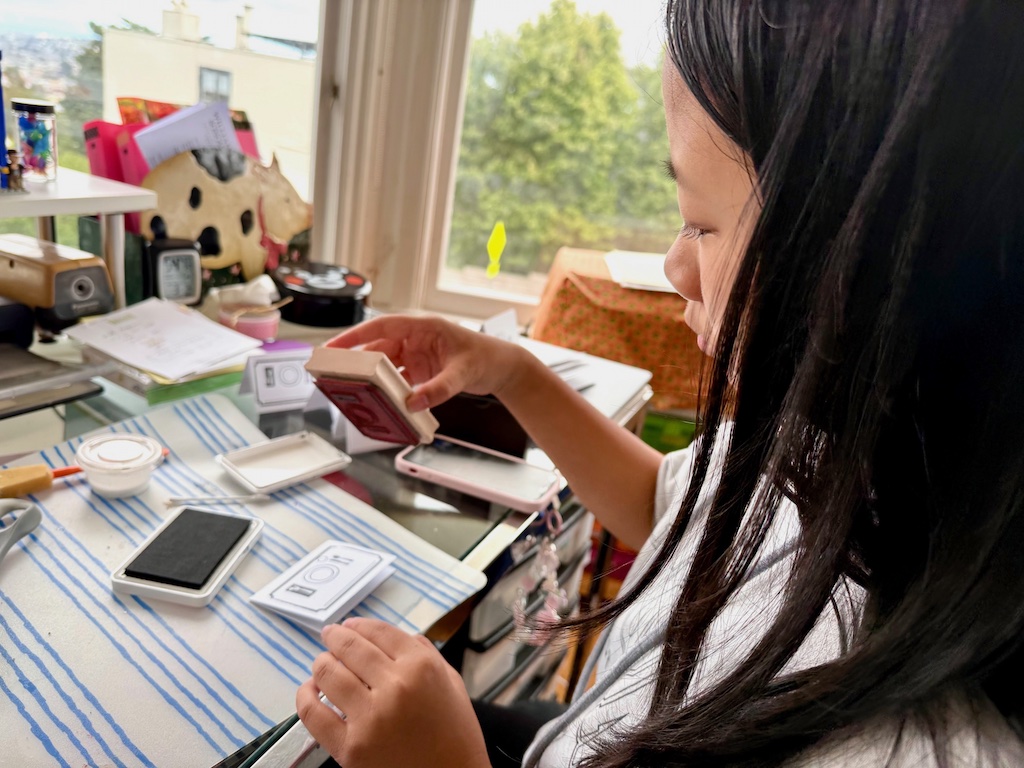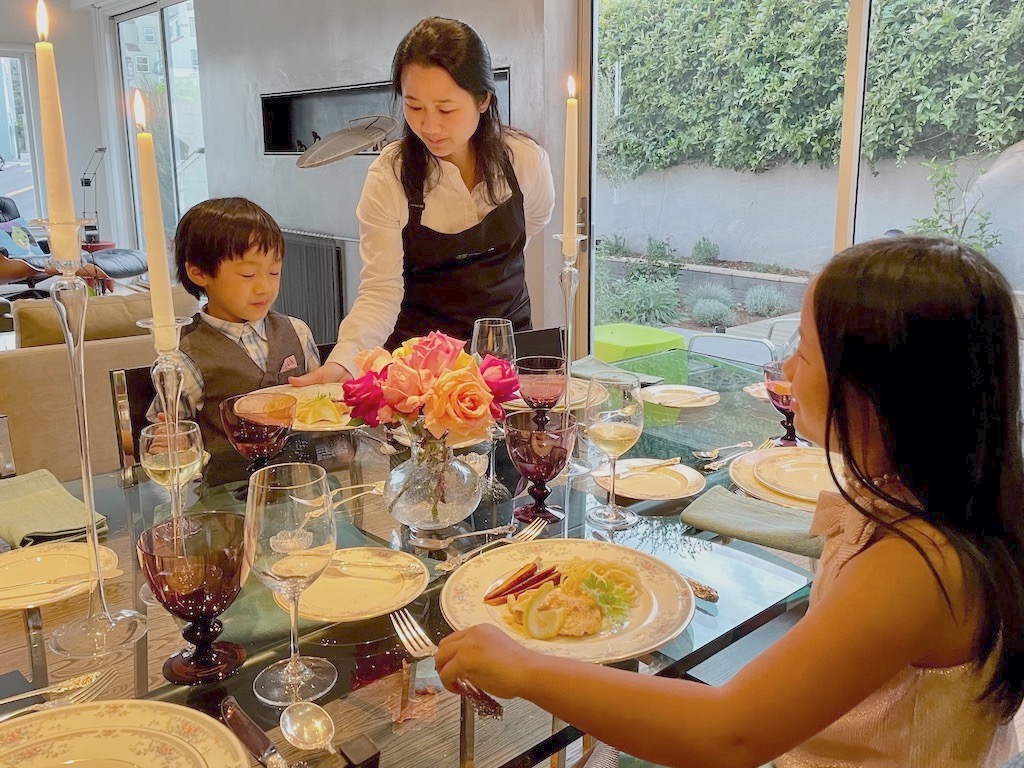Good Table Manners for Kids: Setting the Table
Looking back…
I started this project to encourage good table manners for kids. The idea was, Miss T would set the table for our Friday night family dinners after preschool. She was just three.

Now Miss T is twelve. And while she doesn’t come home with me after school as she did then, she will still help to set the table for our weekly family dinners when she’s asked.

How it Started
Okay, I confess: when Steve and I have dinner, we often eat at the kitchen butcher block, heads buried in our iPads.
But that’s not how we raised our children. No matter how busy, we ate home-cooked meals together, sitting around our dinner table, engaged in conversation. No TV.
And when our grandkids come for our weekly Friday night dinners, we do the same. We are intent on modeling good table manners for kids and having civilized meals.
There are no electronics at our dinner table and we have rich conversations. Grandkids are expected to sit at the table and participate until dinner is over.
One way to ensure good table manners is first, to have respect for the dinner table. And one way to have respect for the table is to be the one to set the table. When Miss T was three, setting the table was more of a game. Today, it’s more of a chore–but a necessary one.
Her brother also has also been tasked with setting the table. While not as careful as his sister, N will do a creditable job. He was six when he started.

How a 3-Year-Old Sets the Table
To help her remember the positions for the knife, fork, napkin and water glass, I drew Miss T a little diagram. But then the independent child drew her own–and a much better drawing than mine!

Miss T would arrange the china and flatware following her schematic, setting the table on tiptoes because she couldn’t quite reach beyond the table edge.
Place Cards as an Incentive
We made place cards from cardstock; if the child sets the table, she is allowed to determine where everyone will sit for that particular dinner. Miss T likes the power this role brings.
However, being in charge of seating carries some responsibilities. Even at three, she had to think about who would be best sitting where. For example, her little brother, still in his high chair, should be seated by mommy or daddy for support.

Rather than grouping her family together, she should mix it up so grandma and grandpa are integrated into the group; that way, we can all participate in the dinnertime conversation.
Originally, we just hand-wrote the names of family members on plain cardstock. But then, I bought us a place card stamp. Today, Miss T does both the stamping on white cardstock and the writing of names in her beautiful French cursive.

When we were growing up–and when our kids were growing up–we all had our regular places at the dinner table. Now, because we mix it up with place cards, depending on how cards are set, we get to sit at various positions around the table. This gives us different views–facing the living room, facing the kitchen, or facing the garden. It’s more fun that way.

Importance of Table Setting
Setting the table may seem a trivial chore, but it’s important for kids to have a sense of participation in the evening’s dinner. (They’ve also been taught by their parents to help bus the table afterwards.)
I always have flowers from our garden on our dinner table. When our garden is bare, I turn to the farmers’ market or Trader Joe’s. So no matter how simple the fare–even if it’s takeout burgers–we demonstrate to the kids that dinnertime is a special, cherished family time.
What Children Learn from this Activity
- How to follow a “map:” If you hand the kids a drawing or photo of how the table should be set, they will learn to replicate the placement; in effect, learning to follow a map.
- Precision and placement of objects following a plan: Instead of dropping utensils willy nilly on the table, kids learn the proper way to place them. It’s a good lesson in doing something correctly.
- Responsibility for part of the dinnertime experience: Kids learn that you don’t just sit down and eat; you help to set up for the dinner.
- Understanding relationships of people in a social setting: Place cards give kids responsibility for determining who would sit most companionably with whom.
- Respect for the table and the act of dining: When a child helps to put in their effort to advance the dinner, they will learn to respect the dinner experience, encouraging good table manners for kids.
Table Setting Today

We started the table setting exercise in the days when Miss T went to preschool and I would pick her up every Friday after school. We did many educational activities during our time together, such as keeping a calendar of what we saw on the way home or playing math games on the bus.
These days, the children come to our weekly dinners with their parents just before dinnertime so they rarely are asked to set the table. Mostly, it’s done before they arrive.
We still use the place cards and I try to give family members an opportunity to sit at different places around the table and next to different people. In fact, since we don’t have regular assigned seats, if we don’t have place cards, everyone gets a little confused about where they should sit!
I still have Miss T’s schematic in my napkin drawer. If called upon to set the table for grandma, she no longer needs to look at it, of course. But it’s a lovely memento of purposeful art done by a three-year-old that illustrates the pains she took to do her job correctly.
And she’ll still take out the place cards to arrange the seating to her liking. That remains the perk for setting the table.
I love it when Miss T can come to our house the night before a special dinner, like Thanksgiving or Christmas, when we can cook, bake, and set the table together. I hope, when she grows up, that setting the table with grandma will become one of the activities she remembers fondly.
Only time will tell.
Sign up to Get Grandma’s Favorite Recipes–Free

Sign up here for my email newsletter. Every Wednesday, I’ll give you a new idea for an activity or insight to nurture the little ones in your life. And once you subscribe, I’ll send you a link so you can download your set of quick and easy recipes as my thanks to you.

She knows better than her parents. 🙂 Adorable pictures. Thanks!
Thanks for checking out the site! Love the opportunity to work with the kiddos.